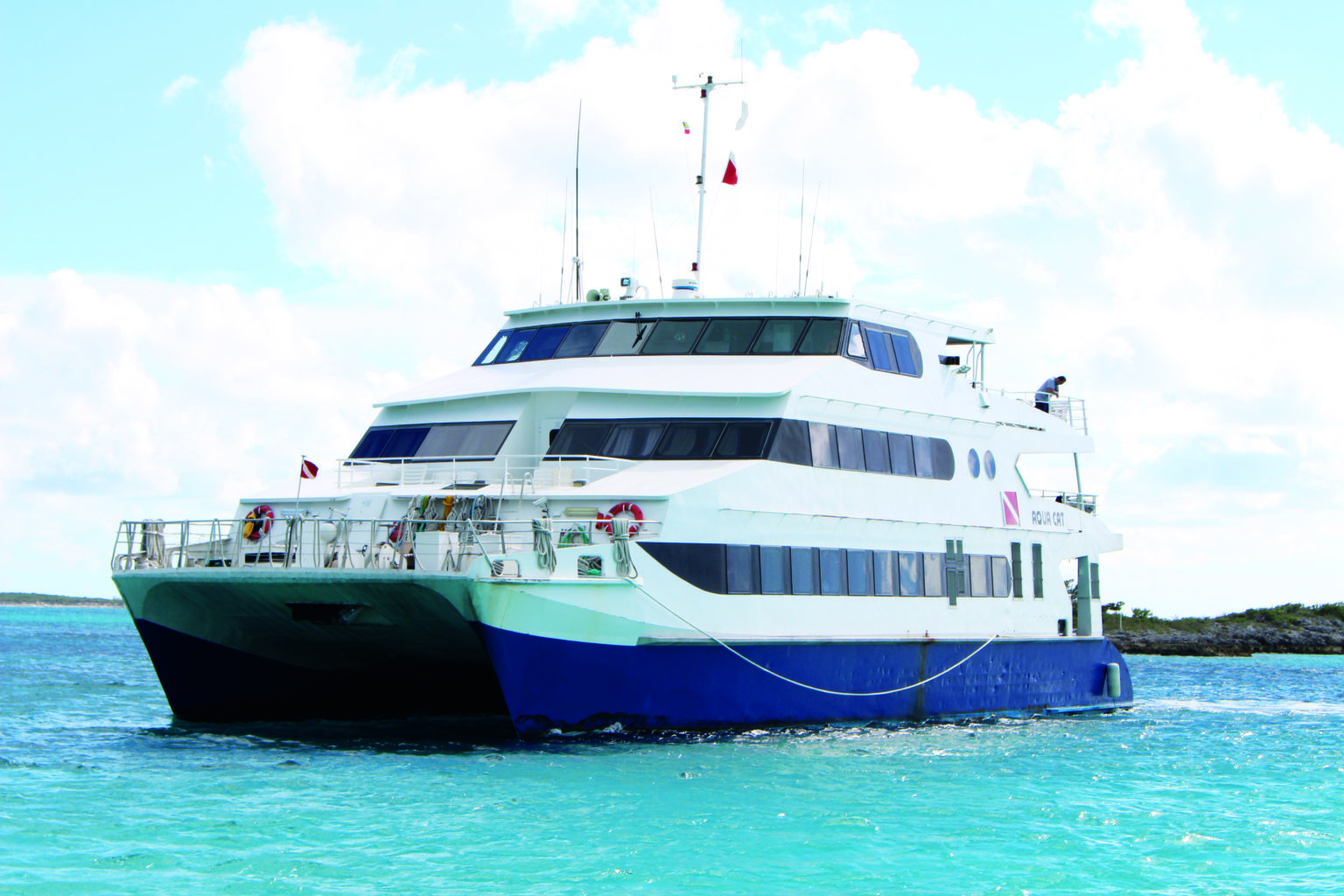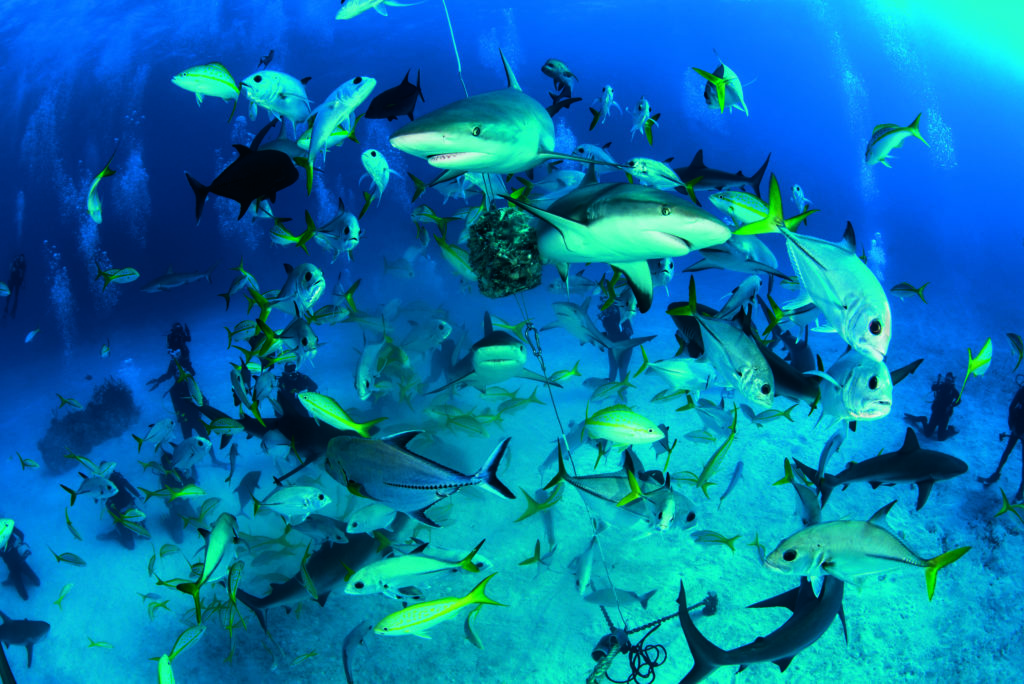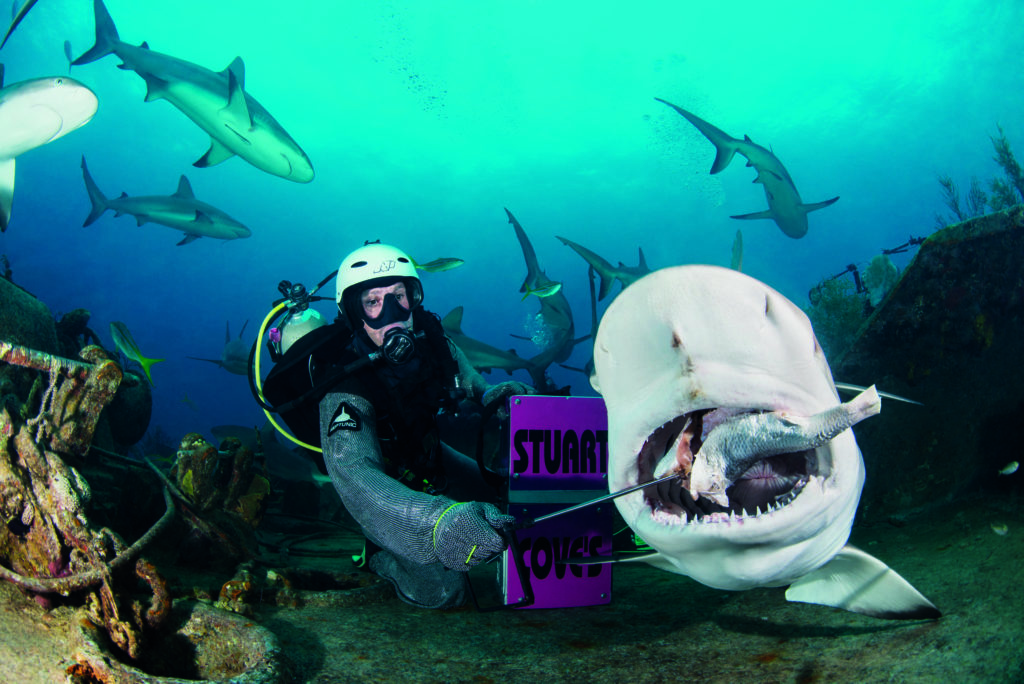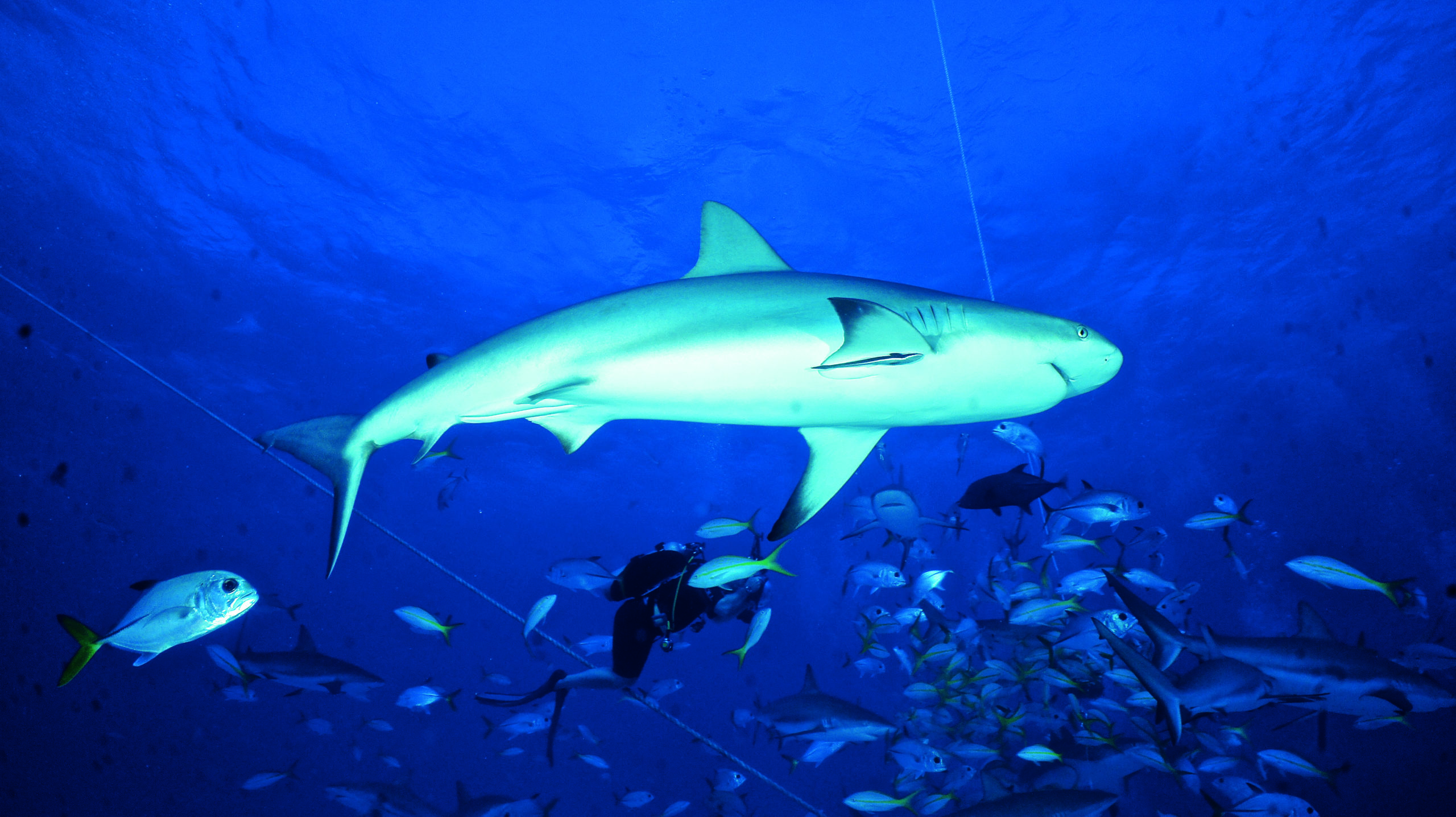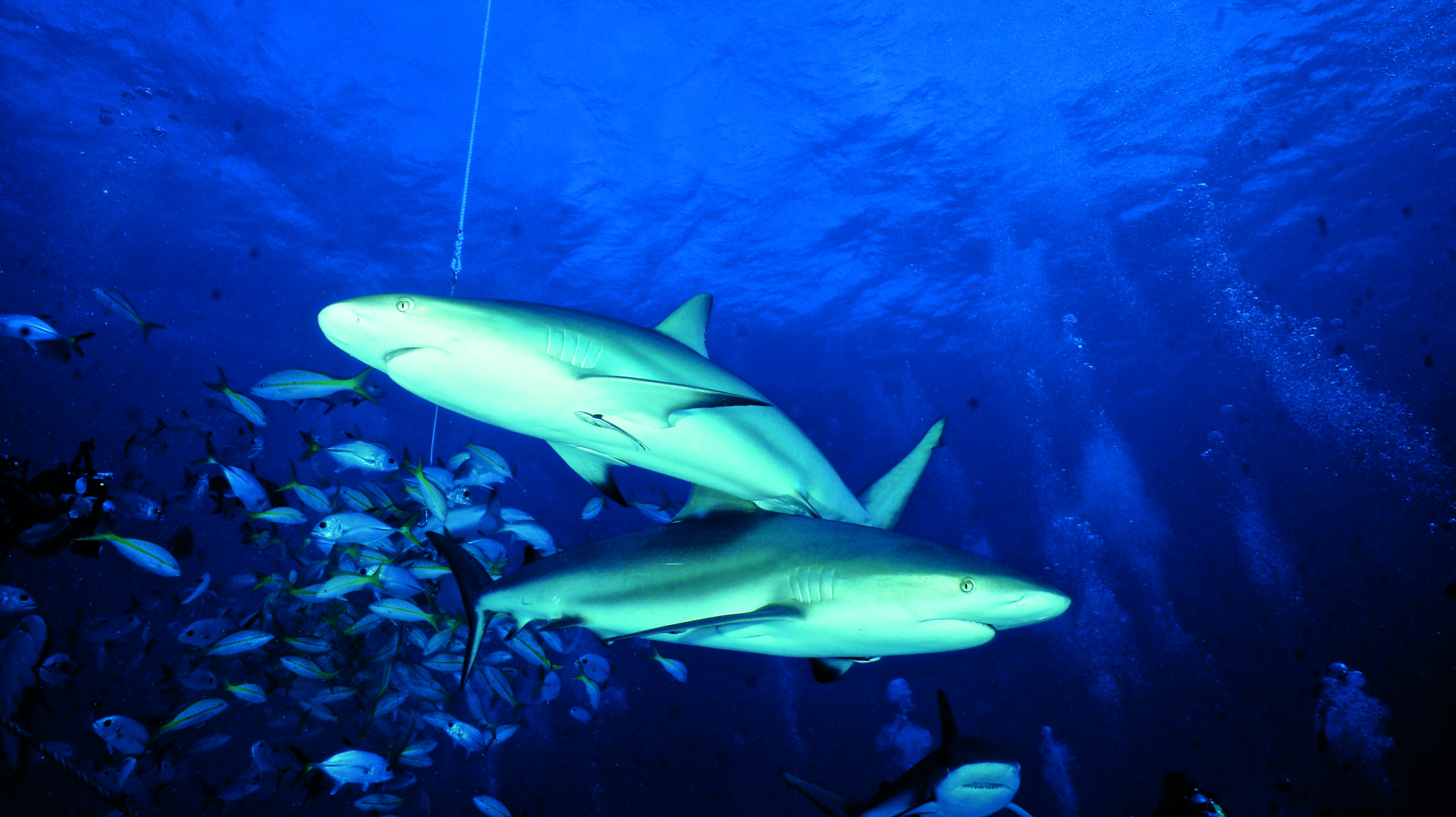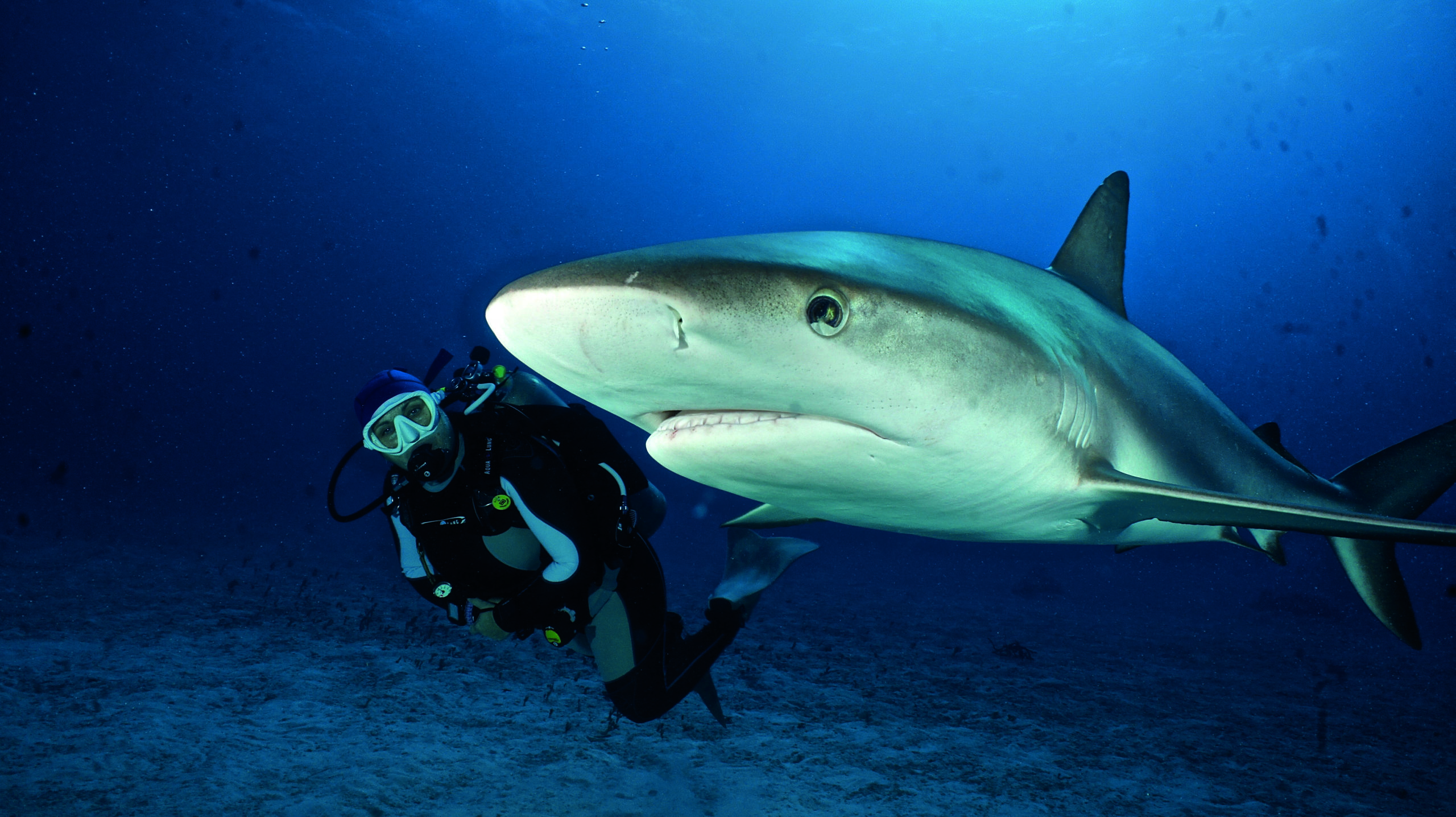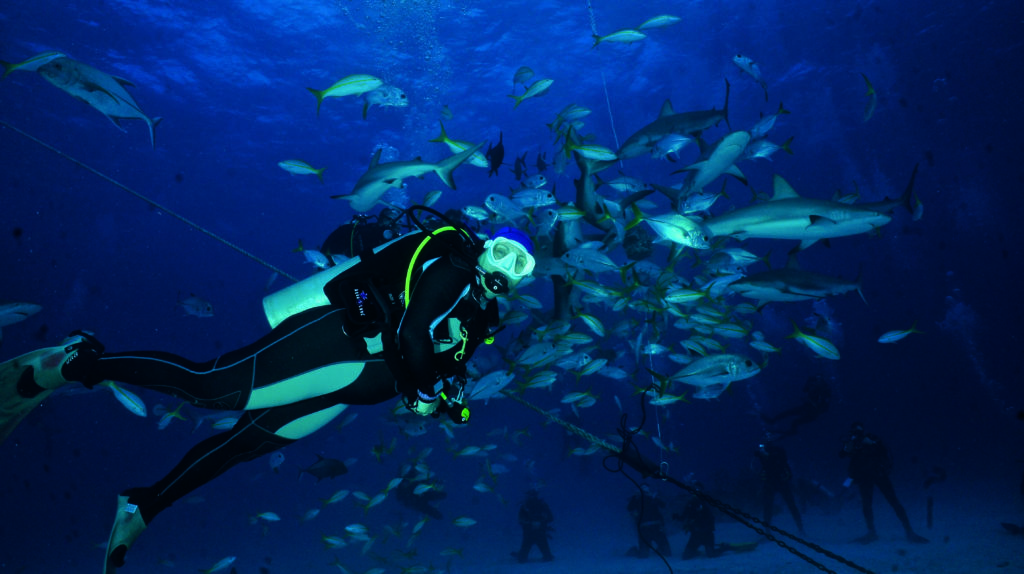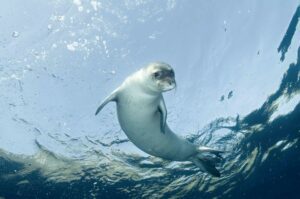The Bahamas is one of the world’s top diving locations, famed for its dramatic walls and exciting drift dives, but what puts it firmly on the map are sharks – lots of sharks. From Caribbean reef and nurse to tiger, bull and great hammerhead, the Bahamas boasts a rich smorgasbord of shark species just waiting for you to encounter when you venture underwater.
The broad range of sharks dwelling in these warm, clear waters means the chances of meeting a shark on any given dive is quite high, but if you want a guaranteed, up close and personal experience with multiple sharks, then you will need to consider an organized shark feed.
Now there has been a lot of conjecture and argument over the years about the pros and cons of shark feeding. In general, I am firmly of the belief that there should be minimal interaction with marine life, lessening the impact divers have on the aquatic environment, however, sharks are under such threat – and have such a negative reputation, thanks to the media – that anything that can help their cause deserves consideration. If a shark feed is done in such a way that it is educational, and helps break down some of the myths surrounding these much-maligned animals, then I am all for it.
Having participated in many shark feeds over the year, I do prefer those that involve a ‘chum sickle’, a frozen chunk of water and fish blood containing fish heads and other scraps that is then suspended mid-water (large buoy on the surface, ground anchor on the bottom). The divers then surround this ‘shark speed ball’, either kneeling on the sand or hovering mid-water, and the sharks come in and chew on the chumsickle, freeing pieces of fish which they then snap up as a tasty snack. With a chum sickle feed, there is minimal interaction between humans and sharks – compared with stick or hand feeding – and I prefer the freedom to be able to swim around during the feed rather than remain stationary on the bottom.
My most-recent shark feed was at the end of last year while on board the Aqua Cat livea board. This vast catamaran cruises from Paradise Island on Nassau down through the Exuma Marine Park and around the waters off Eleuthera, delivering a heady blend of abyssal walls, colorful coral gardens, screaming drift dives and critter-filled night dives, but during its week-long itinerary, a highlight is a chum sickle shark feed at the Split Coral Head dive site that is visited by a couple of dozen Caribbean reef sharks – though there is always the possibility other species may put in an appearance.
The basic schedule on the Aqua Cat runs something like this: eat, dive, relax, dive, eat, dive, relax, dive, eat, dive, sleep – and then repeat! With up to five dives a day on offer from the Sunday to Thursday, it is up to the individual diver as to how many of the dives they opt to take part in, but most of the group on board with me were logging at least four a day, with some hardy souls going for the night dive as well. However, no one misses out on the shark feeding dive.
The excitement builds through the thorough briefing from the crew, which is designed to ensure that no one gets themselves into a position with a shark where the animal feels hemmed in or threatened. Then it is time to get in the water. The divers get in first and head down to the feeding site, where they form a loose circle around the anchor point, and then one of the crew swims down dragging the chumsickle behind them, usually enveloped in a cloud of sharks that have got the scent of the fish scraps.
Once the chumsickle is securely fastened in place, the sharks will begin to bite at it in earnest, but it never becomes frenzied. Yes, the sharks jostle one another for position, and it can actually look more wild than it really is, but in reality, there is a real pecking order through the sharks, and the bigger animals definitely get to go at the chumsickle first, then it filters down through the sizes.
While this is going on, gigantic yellowtail snapper and some cheeky grouper will sneak in and grab morsels of food. In this instance, I saw one grouper actually snag a decent-sized hunk of fish right out of the mouth of a two-metre shark! The shark looked stunned to have lost its snack, while the grouper proudly shot off to enjoy its prize.
The length of the feed can be any time from 15 minutes to the full hour of the dive time, it all depends on how many sharks turn up and how long the chumsickle stays together. The divers do not have to stay at the feed for the entire dive, they can wander off to explore the surrounding reef, but most opt to remain with the sharks as they are so mesmerising.
Many divers will stay anchored to the seabed, either standing or kneeling on the sand, but I prefer to hover mid-water with whoever is modelling for me, as then you can position them with the chumsickle behind them to get an action-shot of the feed itself, or have them slightly to one side, so you have a nice blue-water background and can then work to ‘wrangle’ a shark next to them, for a more-natural-looking image. You can also work with the chumsickle behind you, and capture the sharks as they approach from the distance.
Conclusion
Shark – or any type of marine-life feed – will have their advocates and their detractors, and it is up to the individual diver as to whether they want to participate or not. As I stated previously, where there is an educational element, and because sharks are so under-threat, I tend to fall on the side of ‘advocate’, but I do prefer the hand’s-off nature of the chumsickle feeds over other methods. The Bahamas are past-masters at shark feeds, and if going on one can change a diver’s perception of sharks, or allow you to capture images that when you show them to friends and family alter their view of these critically endangered creatures, then that has to be a good thing all round.
If a shark feed is done in such a way that it is educational, and helps break down some of the myths surrounding these much-maligned animals, then I am all for it.
In this instance, I saw one grouper actually snag a decent-sized hunk of fish right out of the mouth of a two-metre shark!
The ‘Geordie Kiss’, by Stuart Philpott
Sharks, don’t you just love ’em? As an underwater photographer, it’s my job to get the literally jaw-dropping close-up images you see in magazines. I prefer to use my 16mm fisheye lens, which creates really atmospheric wide-angle shots, but there’s always a ‘catch’, and in this case it means I have to get extremely close to the pointed teeth end in order to fill the whole frame – and by close I mean less than a arm’s distance away, maybe only a forearm. Not severed, I might add!
Naturally, most species of shark will stay away from divers, so to lure them in close we have to create an artificial situation, i.e. fish bait. With Caribbean reef sharks from the Bahamas, this is usually offered by a chain-mailed hand from a box, wedged under a rock or made into a kind of frozen baitball. Caribbean reef sharks don’t usually play rough, but when there are bits of dead fish floating about during a feed, the situation can become somewhat unpredictable.
So, try and picture the scene – one frozen baitball bobbing about in around 10m of water, 20 or more Caribbean reef sharks, hundreds of trevally and snapper, a couple of chunky grouper, plus one lunatic underwater photographer gripping tightly onto a rope, the rope being attached to the chumsickle sitting approximately one metre above my head. Sharks, trevally, snapper and grouper are flying around me, through my legs, bumping my dome port and nibbling my flash guns. I never become complacent and always remain aware of my surroundings, although when I’m looking through a camera viewfinder, it’s easy to become detached from the intense action that’s unfolding in front of the lens – and then wham, suddenly I get brought back to reality when a shark head butts me at full speed!
The Aqua Cat
The Aqua Cat is a 30-metre catamaran equipped with a spacious main salon encompassing the dining room and lounge, large alfresco deck with barbecue, wide-open sun deck, gigantic dive deck and luxurious cabins with ensuite facilities, air-conditioning and, in most cases, big picture windows for taking in the fantastic views. Capable of taking from 22 to 30 passengers, she can cruise at 14 knots, but her shallow draft means she can easily wind her way through the myriad islets and islands of the Exumas during your voyage. Visit Aqua Cat Website
Photographs by Mark Evans and Stuart Philpott
